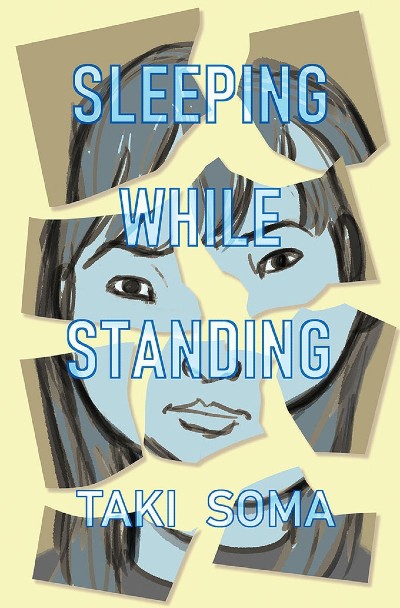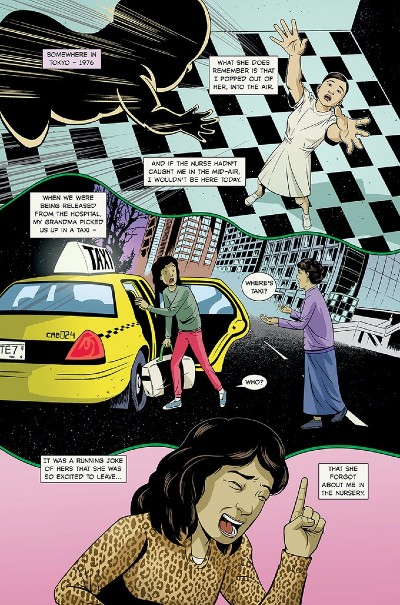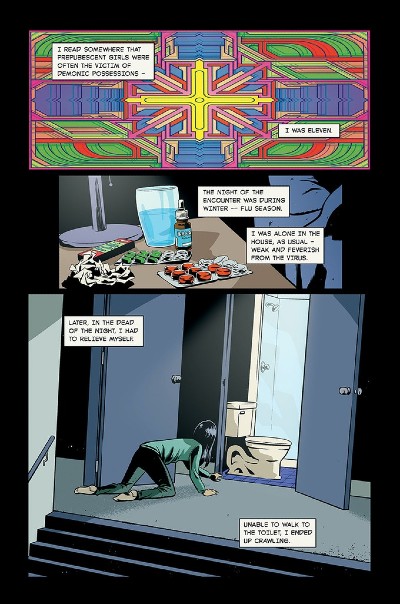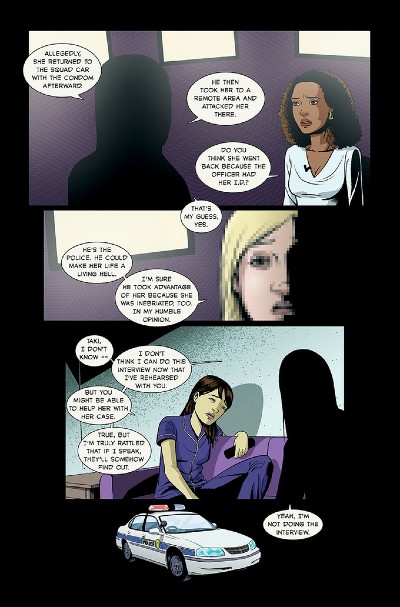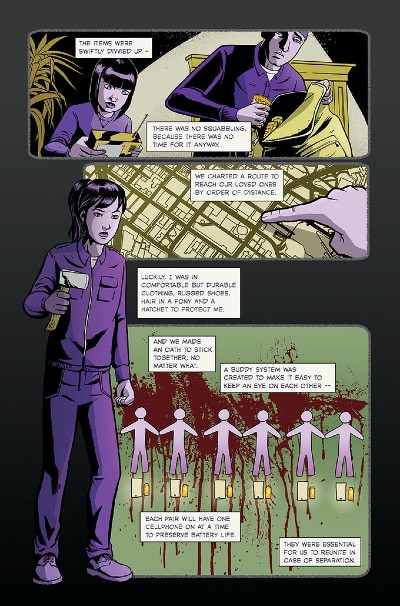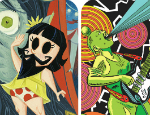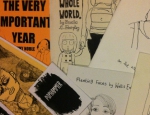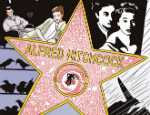Avery Hill’s first ever Kickstarter is now in its final few days. So to give it one last push on our end here at Broken Frontier we’re chatting today with Taki Soma, whose graphic memoir Sleeping While Standing is one of the three featured projects. Soma is, of course, a HUGO-nominated creator whose genre fiction comics work has included titles like Rapture, Sinergy, The Victories, United States vs. Murder, Inc., Bitch Planet, Dick Tracy, The After Realm and Iron Man. With Sleeping While Standing, though, Soma enters autobiographical comics territory. We’ve had an advance look at the book and can confirm it’s incredibly powerful practice that’s sure to be a standout release of 2022.
This is how Avery Hill describe the book: A series of short autobiographical strips, dropping in at important events throughout her life that shaped who she is today, told in a compelling and humorous authorial voice. We are led by Taki through her early childhood in Japan in the early 80s, to moving to Minnesota, the separation of her parents, childhood trauma, teenage angst, death, drugs, comics, health issues, love, fertility, pets and zombies; all of life is here in this book! It’s a picture of a highly regarded creator, with an unflinching look at some particularly harrowing moments, but threaded through with levity and love.
We talk with Soma today at BF about the responsibilities of autobio, its potentially cathartic qualities, and her creative process…
You can back the Kickstarter here.
ANDY OLIVER: Firstly for those considering backing the Kickstarter how would you describe the premise and themes of Sleeping While Standing?
TAKI SOMA: It’s an autobiography told in fragments; I focus on subjects or events in my life that’s helped shape me into the person I am today. Oh, and every subject is four pages or less – it makes some of the heavier subjects more tolerable, I hope.
AO: Sleeping While Standing is obviously a very different type of comics compared to your genre comics work. What was the impetus for bringing your own story to the medium?
SOMA: When you’re living your life, you don’t tend to realize how uncommon your experiences may be until you tell your friends. Their reactions are the main reasons I wanted to do something like Sleeping While Standing; and comics is where I live, and know more intimately than other mediums, you know?
AO: It’s an extremely candid book with some deeply affecting sequences. How much of a sense of vulnerability is there in bringing those scenes to the page? Conversely was there any feeling of catharsis in committing them to a shared narrative?
SOMA: The first subject I worked was about suicide, called ‘Box’. I did it just for me, not knowing where it was going to go, if anywhere or anything – it was just an instinct – and I did feel catharsis, peace, and therapeutic relief from it. I wanted to know if I can tackle other demons this way, and I just kept making more and more. There’s a story where I talk about a demon I met once, so there’s that…
AO: It’s a standard question about autobiographical work but it’s a strand of comics that comes with its own specific responsibilities. How did you approach that given the real life events and people being depicted?
SOMA: I stressed over some of them for sure. In fact, there are some stories I never produced due to the responsibility I felt and/or I didn’t want to dive into deeply for personal reasons. I just hope I protected people’s identities who should be in the book.
AO: Why did you choose a non-linear narrative for the book? What did you feel that brought to the relationship between page and reader?
SOMA: It’s non-linear because it was my therapy. And really, I didn’t want to bore anyone either because I’m not a famous person who led an extraordinary life but just happened to have lived a unique life so far.
AO: One of the very obvious things about the book is how effective it is in using the unique language of comics to convey your story. What is it about the form do you think that allows it to connect so empathetically with an audience and bring them so intimately into personal stories like this one?
SOMA: I think there are two reasons. One is that I chose the stories that comes off as unusual, but I tried to tie it to universal perception so that the reader can feel the same emotions I did as I was going through them. Two, as I mentioned earlier, they’re all four pages or less – you don’t have to commit too much of your emotional bandwidth all at once. Except there are funny stories peppered in there too, so it’s not all doom and gloom!
AO: I don’t want to finish without mentioning your use of colour on the book which is so powerful in a number of key sections in emphasising theme and emotional state. Can you tell us a little about your artistic process and the mediums you work in?
SOMA: As my health declined, I was forced to work 100% digital – Sleeping While Standing was created standing at my desk on my Wacom. It was never my goal, to be digital, but I really see the benefit and don’t miss the traditional way much. It also meant I had to learn a new ‘medium’ though, and I still feel like I’m learning. I hope the art, the color and everything translate the way I am hoping. *crossing fingers*
AO: And, finally, what other upcoming or current projects from you should we be looking out for?
SOMA: I don’t have a publisher or anything yet, but I wrote another graphic novel titled Van Gogh ’88. and some of the preliminary art by my husband and comic creator, Michael Avon Oeming has been done so far, so I think that might be what’s next? Despite not knowing where they might land, I’m continuously creating content, so look out, world.
Interview by Andy Oliver





